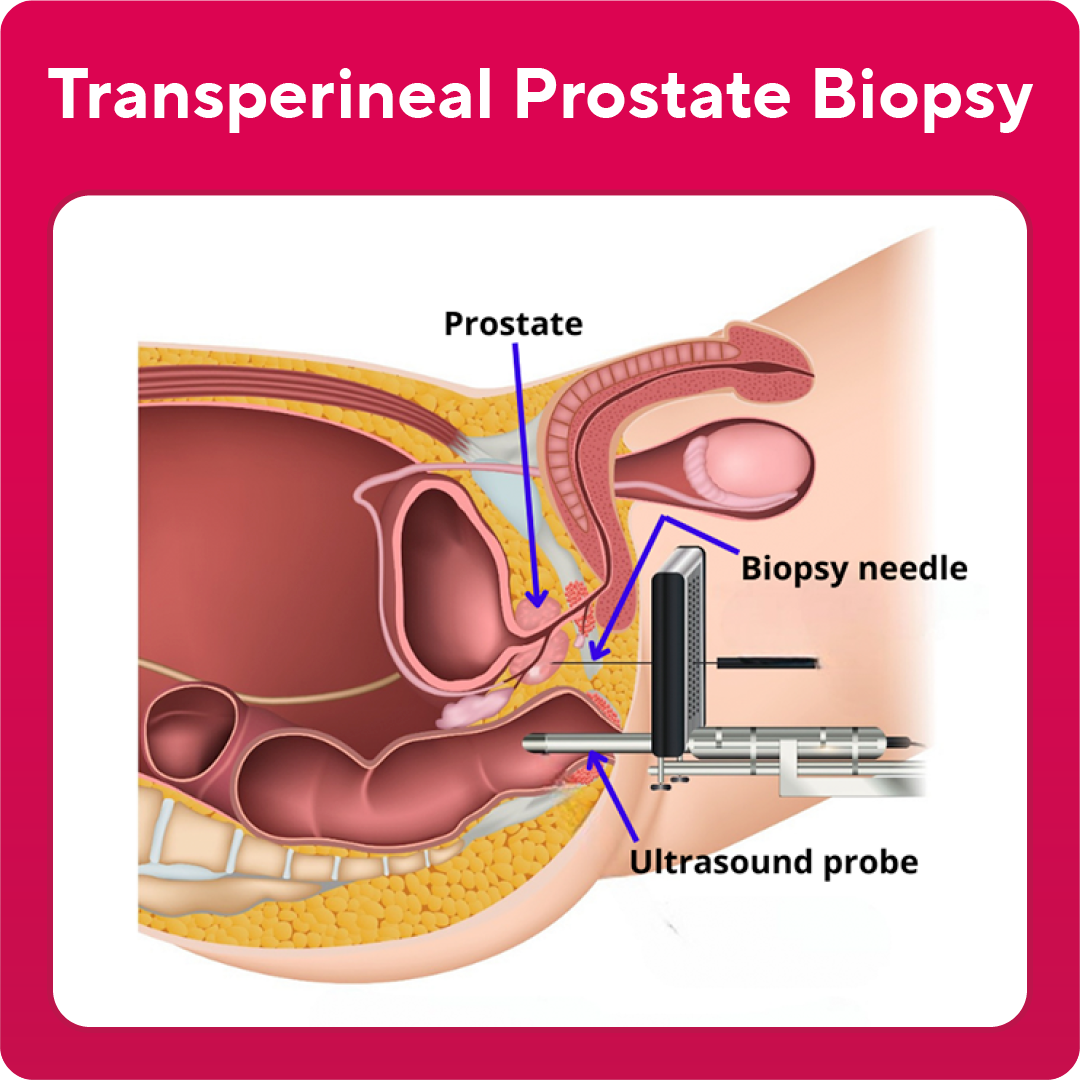A biopsy is a procedure that involves removing a sample of cells or tissue from an area of the body for investigation.
A prostate biopsy can help diagnose prostate cancer. Your health care professional will use a needle to extract samples of prostate tissue, which are sent to a pathology lab to be analysed for signs of prostate cancer.
A biopsy is the only test that can confirm the presence of prostate cancer. Your specialist may recommend you have a biopsy if you have any of the following signs or symptoms of prostate cancer:
Only minor risks and side effects associated with a prostate biopsy, and they include:
Speak to your specialist if you have questions about prostate biopsy risks and side effects.

Here’s what to expect during your biopsy procedure:
The procedure usually takes around 20 minutes.
Your specialist will review the results and make another appointment with you. The next steps depend on what the information in your biopsy results reveals.
The results can provide information such as:
If the biopsy reveals the presence of cancerous cells, you may need other tests to determine whether the cancer has spread, including:
Your treatment plan will depend on the stage of cancer, whether it has spread and whether it is likely to cause problems for you later in life.
A Gleason grade describes the pattern of prostate cancer cells seen under a microscope. The different patterns identify different grades of prostate cancer from 6 to 10. Two scores out of 5 are added together based on the most common types of grading. Gleason 6 is 3+3, Gleason 7 is 3+4 or 4+3 ( with the most common type listed first if differing), while Gleason 10 would be 5+5
A higher Gleason grade cancer is more likely to have spread outside the prostate, but most prostate cancers have not spread at the time of the diagnosis.
Some samples can show more than one grade, so adding two Gleason grades – the most common one and the highest one – gives an overall score called a Gleason score.
For example, if the biopsy samples show that:
Your doctor can explain your Gleason score for your specific prostate biopsy results and what it means for your treatment plan.


